ELAR 2.10
Author's purpose and craft: listening, speaking, reading, writing, and thinking using multiple texts. The student uses critical inquiry to analyze the authors' choices and how they influence and communicate meaning within a variety of texts. The student analyzes and applies author's craft purposefully in order to develop his or her own products and performances. The student is expected to:
- (1) discuss the author's purpose for writing text;
- (A) discuss how the use of text structure contributes to the author's purpose;
- (B) discuss the author's use of print and graphic features to achieve specific purposes;
- (C) discuss the use of descriptive, literal, and figurative language;
- (D) identify the use of first or third person in a text; and
- (E) identify and explain the use of repetition.
- Free Plan

Human Histories: World Explorers – Comprehension Worksheet
A free comprehension worksheet paired with an informational text about world explorers.
- Free Plan

Comparing Texts on the Same Topic Worksheet
Explore the purpose of poem texts and report texts with clear guidance that helps students' interpretive skills.
- Plus Plan

Author's Purpose Worksheet Set
Assess reading comprehension by using this comprehensive Author's Purpose Worksheet Set.
- Free Plan
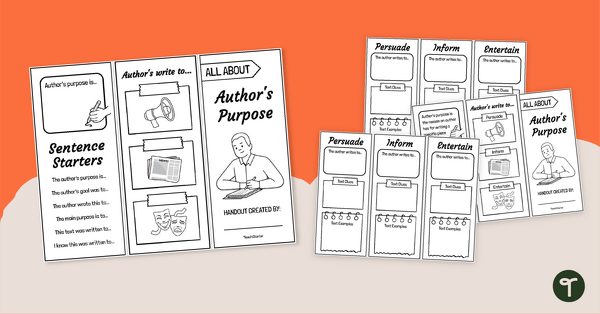
Free Author’s Purpose Handout
Use this Author’s Purpose Handout in the form of a brochure to explore the different reasons authors write.
- Plus Plan

Martin Luther King, Jr. Reading Activity Pack
Apply a range of reading comprehension strategies to learn about Martin Luther King, Jr.
- Free Plan

Sensory Chart Graphic Organizer
A graphic organizer for students to use when categorizing sensory details.
- Plus Plan

Why? Because Question Scene Cards
Support both oral language development and English visual text comprehension with these Why? Because Question Scene Cards.
- Plus Plan
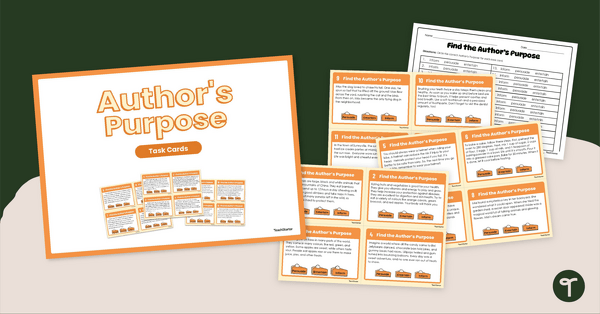
Author's Purpose Task Cards
Help your students master the skill of identifying the author’s purpose with this set of engaging Author’s Purpose task cards.
- Plus Plan

Author’s Purpose Activity - Digital Task Cards
Explore Author’s Purpose with this set of engaging and interactive Author’s Purpose Activity digital task cards.
- Plus Plan

Author’s Purpose Reading Passages Worksheet Set
Explore the Author's Purpose in these reading passages with this set of Author's Purpose worksheets.
- Plus Plan

Author's Purpose PowerPoint
Use this Author's Purpose PowerPoint to teach your students how to identify the author’s purpose in a text.
- Plus Plan

Fact or Opinion? - Digital Learning Activity
Practice identifying, sorting, and writing facts and opinions with an interactive digital learning activity.
- Plus Plan

Simile Poster (Primary)
Show your students an example of a simile using this colorful classroom display poster.
- Plus Plan
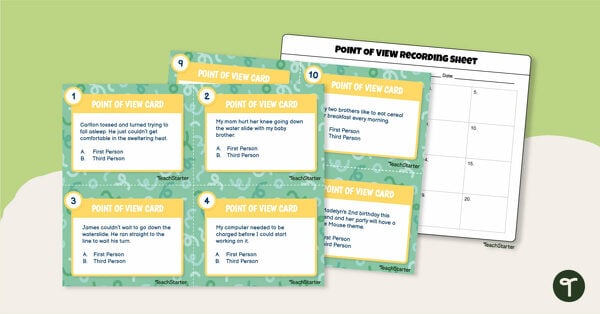
Point of View Task Cards - Beginner Set
Use these colorful, fun task cards to help your beginning reader identify first, and third-person point of view (POV)
- Free Plan

Author's Purpose - Sorting Worksheet
A teaching resource to help teach your students about author's purpose.
- Plus Plan

Fiction and Nonfiction Visual Literacy Cards
Help students sharpen their ability to interpret, analyse, and think critically about images in texts with this engaging set of visual literacy cards.
- Plus Plan

Reading Comprehension With Pictures Worksheets
Download the Reading Comprehension with Picture Worksheets today and help your students become confident, visual readers!
- Plus Plan

Author’s Purpose to Persuade Flipbook
Help students explore the Author’s Purpose to Persuade with this engaging and interactive flipbook.
- Plus Plan

Author’s Purpose to Inform Flipbook
Help students explore the Author’s Purpose to Inform with this engaging and interactive flipbook!
- Plus Plan

Author’s Purpose to Entertain Flipbook Template
Help students explore the Author’s Purpose to Entertain with this engaging and interactive flipbook.
- Plus Plan

Author’s Purpose Pie Worksheet Set
Practice Author’s Purpose knowledge with this set of Author’s Purpose Worksheets.
- Plus Plan

Authors Purpose Craft Template Bundle
Explore Author's Purpose with this fun and engaging set of Author's Purpose craft templates.
- Plus Plan

Author's Purpose Quiz – Self-Checking Task Cards
Engage students with their learning on author's purpose with this Author's Purpose Quiz.
- Plus Plan

Author’s Purpose Graphic Organizer Pack
Explore the purpose of an author's writing with these Author's Purpose Graphic Organizers.
- Plus Plan

Author’s Purpose Game - Movement Activity
Explore Author’s Purpose in texts through movement using this fun and engaging Author’s Purpose Game.
- Plus Plan

Author's Purpose Anchor Chart Set
Display this set of Author’s Purpose Pie posters to help students remember the various reasons authors write.
- Plus Plan

Author’s Purpose Sorting Activity
Use this author’s purpose sorting activity to teach your students the difference between persuasive, informative and narrative writing.
- Plus Plan

Three Levels of Reading Posters
Teach your students to read beyond the lines, between the lines and on the lines with a set of printable 3 Levels of Reading posters.
- Plus Plan
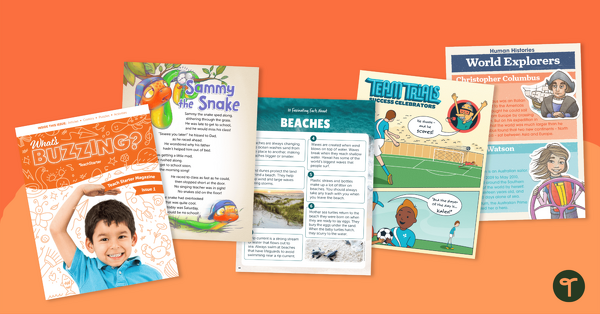
Grade 2 Magazine - What's Buzzing? (Issue 1)
A beautifully designed, 24-page reading magazine specifically written for Grade 2 students.
- Plus Plan

Sweet Hearts Fact and Opinion - Valentine's Day Activity
Practice sweet reading skills on Valentine’s Day with a set of Sweetheart Fact and Opinion task cards.
- Plus Plan
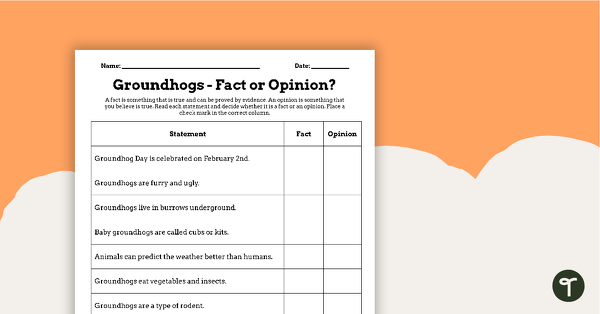
Groundhogs - Fact or Opinion Worksheet
Practice identify facts and opinions with a Groundhog Day worksheet.
- Plus Plan

Author's Purpose - Puzzle Activity
A teaching resource to help teach your students about author’s purpose.